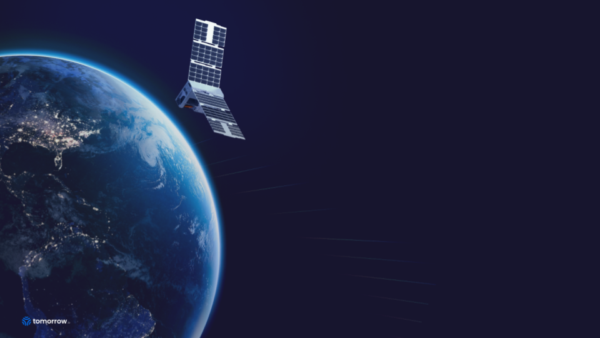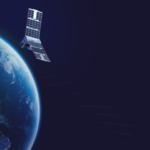At Tomorrow.io, space innovation doesn’t just look impressive on a screen; it’s the result of relentless collaboration, technical precision, and the thrill of achieving the extraordinary.
In a recent interview, Tomorrow.io’s Technical Program Manager, Jack Dalimore, revealed what it truly takes to launch a satellite into orbit. From two-year timelines to musical metaphors, Jack painted a vivid picture of the process behind our latest successful launch.
Catch the entire thing below!
Building a Satellite: Like Legos in Space
The process begins with assembling dozens of intricate components, “kind of like building this Lego model,” Jack describes. With parts sourced from various vendors, the satellite’s core is brought together by Tomorrow.io’s bus integration partner. Once assembled, it undergoes environmental testing, a process Jack dubbed “shaking and baking the satellite,” to simulate the harsh conditions of space.
“These tests are to prepare it for the harsh environments of space,” Jack explained. “We focus on temperature, pressure, and vibrational environments on launch… to get us confidence that the satellite is going to perform on orbit.”
Two Years of Planning, Compressed
While the satellite journey spans years, Tomorrow.io works on an expedited timeline. Their most recent program began in 2022, leading to a first launch in August 2024. “That’s actually quite expedited compared to some other bigger satellites,” said Jack. “We were building off of some heritage with a previous NASA-MIT collaboration, so we were able to move quickly.”
Throughout the process, various internal teams—from systems engineering to mission operations—collaborate with external vendors and launch providers. “It’s a huge team effort,” Jack emphasized. “Everyone plays a role, and timing, quality, and communication are essential.”
Testing the Tech: Practice Like a Musician
When asked how Tomorrow.io tests its satellite technology, Jack offered a surprisingly accessible analogy: music practice.
“You take little phrases of music at a time and practice them. Eventually, you put it all together,” he said. “That’s how we test satellites. There are subsystems—batteries, solar arrays, radios, payloads—and we test them individually. Then we do end-to-end testing called a ‘Day in the Life,’ or DITL, to simulate operations in orbit.”
The Trouble with Interfaces: Where Things Go Wrong
One of the most complex and challenging aspects of satellite development? Interfaces.
“The thing that always makes complexity in satellites… is the interfaces. The more you break it up into subsystems, the more complexity you introduce,” Jack explained. From loose connectors to software bugs, every minor detail matters. “You spend a lot of time troubleshooting, figuring out the symptoms—and then the actual root of the problem.”
But these challenges also breed perseverance. “It’s a good test of patience for the whole team,” Jack said.
When Delays Happen and Why
Launch delays are an expected part of the journey, often due to weather, technical issues, or pad availability.
“Our launch was about three days after another launch from the same pad,” Jack noted. “It takes time to turn a launch pad around.”
Interestingly, Tomorrow.io’s satellite was part of a rideshare mission—one rocket carrying multiple payloads. “There were upwards of 60 other payloads,” Jack said. “They don’t necessarily want to delay for just one customer… unless the issue affects others.”
First Contact: The Moment It All Pays Off
After months—or years—of preparation, what’s the most exhilarating moment?
“Truly, the most exciting part is when the launch prep process is over,” Jack laughed. “But really, the moment you make first contact with the satellite… That’s easily the most exciting moment of the whole thing.”
For Tomorrow.io’s latest launch, that moment came just an hour after deployment. “We made contact with it only an hour later and were able to start getting data down,” Jack recalled. “That is very much a culmination of all your effort, wrapped up into one moment.”
Climbing the Mountain: What the Public Should Know
If Jack could convey one thing to the public about what it takes to launch a satellite, it’s this: “It’s similar to training for the Olympics or climbing a very technical mountain.”
“Each step has different requirements, and you’re training for that eventual summit,” he said. “There are always bumps in the road, detours… And once you go through the process, that’s when you truly know how difficult it is.”
And it’s not just about technology—it’s about people. “People spend years of their life dedicated to one mission,” Jack reflected. “It behooves people to remember how much time and energy and love went into each of those steps.”
Conclusion
Jack’s reflections offer a rare and inspiring look into the human side of space innovation. Launching a satellite isn’t just rocket science. It’s passion, teamwork, and grit. At Tomorrow.io, every launch is more than a mission. They’re milestones.
Want more behind-the-scenes insights like this?
Stay tuned for more updates from the Tomorrow.io team.



